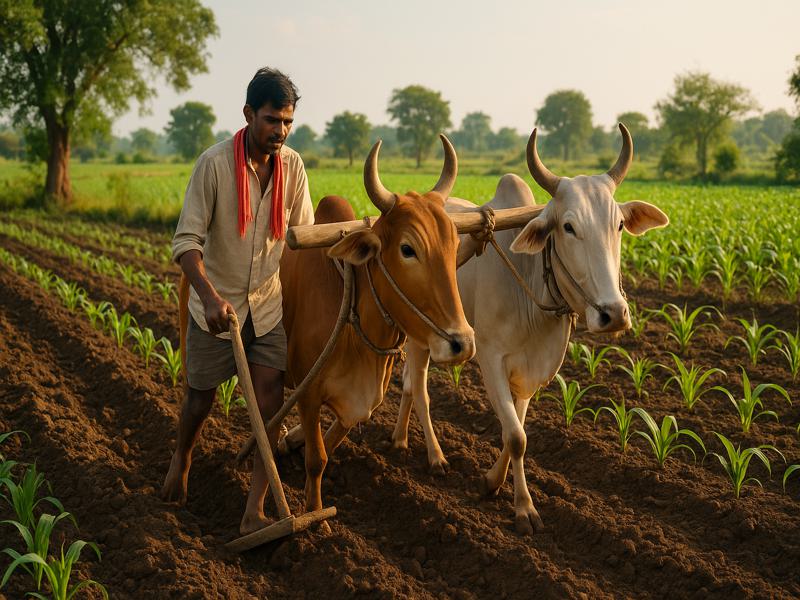Basic Requirements

Basic Requirements for a Successful Farming Journey
Starting a farming journey is not just about owning land—it’s about understanding the essential building blocks that make a farm thrive. Whether you’re planning a small organic setup or a mid-scale venture, getting the basic requirements right is the key to long-term success.
In this blog post, we’ll explore the four pillars every new farmer should focus on: Land and Soil Preparation, Water and Irrigation Sources, Seeds and Saplings, and Tools and Equipment. These are the foundation of any successful farming practice and crucial for anyone stepping into agriculture in today’s climate-aware, sustainable-focused world.
1. Land and Soil Preparation: The Foundation of Farming
One of the most vital basic requirements for agriculture is preparing your land correctly. Soil is not just dirt—it’s a living system. A well-prepared soil ensures your crops have the nutrients, structure, and drainage they need.
Steps for Effective Land Preparation:
- Land Clearing: Remove weeds, stones, and previous crop residues.
- Ploughing and Tilling: Break up the soil to aerate and loosen it for root growth.
- Leveling: Ensures even water distribution and reduces erosion risk.
- Soil Testing: Understand pH levels, nutrient availability, and deficiencies.
- Adding Organic Matter: Use compost, green manure, or bio-fertilizers to improve soil structure and fertility.
Why it matters: Proper soil preparation increases water retention, root penetration, and nutrient availability, which directly impacts crop yield.
🧠 Tip for travelers interested in agri-tourism: Visiting farms that practice regenerative agriculture gives insight into sustainable soil preparation methods.
2. Water and Irrigation Sources: Life Support for Crops
Water is the second most important factor after soil. Without consistent and clean water sources, even the most fertile land can turn into dust. Understanding your water and irrigation sources is a critical basic requirement for farming success.
Common Water Sources for Farmers:
- Groundwater (Wells and Boreholes)
- Surface Water (Rivers, Lakes, Ponds)
- Rainwater Harvesting Systems
- Irrigation Canals from Government Projects
Popular Irrigation Methods:
- Drip Irrigation: Saves water and directs it straight to roots—ideal for vegetables and orchards.
- Sprinkler Irrigation: Best for grains and lawns.
- Flood Irrigation: Traditional method used for crops like paddy.
- Manual Watering: Suitable for kitchen gardens and small plots.
Why it matters: Irrigation efficiency improves yield, saves water, and allows farming even in regions with low rainfall.
🌱 For travel bloggers promoting eco-tourism, highlighting farms using solar-powered drip systems can inspire readers toward sustainability.
3. Seeds and Saplings: Choosing the Right Genetic Material
The quality of seeds and saplings determines the success or failure of your crops. Whether it’s wheat, rice, vegetables, or fruit trees, this basic requirement is your farm’s blueprint.
Key Factors in Selecting Seeds and Saplings:
- Certified Seeds: Always buy from licensed vendors for disease-free and high-germination rate seeds.
- Climate Suitability: Match the seed variety with your region’s climate and soil.
- Pest and Disease Resistance: Modern varieties are more resistant to common threats.
- Maturity Period: Understand the growing cycle—early, mid, or late varieties.
- Organic vs Hybrid: Choose based on farming goals—organic for sustainability, hybrid for yield.
Planting Tips:
- Soak certain seeds before sowing.
- Maintain spacing and depth as per crop guidelines.
- Use nursery beds for saplings before transplanting to fields.
Why it matters: Good-quality seeds ensure better germination, uniform growth, and higher resistance to climate stress.
📸 Travel content idea: Showcase seed banks or agricultural fairs in your blog, offering tourists a glimpse into local biodiversity.
4. Tools and Equipment: Backbone of Efficient Farming
Modern farming is more than a spade and a sickle. From simple hand tools to advanced mechanization, tools and equipment are essential basic requirements that affect labor, time, and production cost.
Essential Tools for Beginner Farmers:
- Manual Tools: Spade, hoe, sickle, rake, seed drill.
- Irrigation Tools: Water cans, hose pipes, drip tubes.
- Harvesting Tools: Scythes, threshers, knives.
- Storage Tools: Grain silos, seed containers, drying trays.
Mechanized Equipment:
- Tractors and Tillers: For ploughing, tilling, and transporting.
- Rotavators: For efficient soil preparation.
- Sprayers: Used for applying pesticides and fertilizers.
- Threshers and Harvesters: Save time and reduce post-harvest losses.
Why it matters: Right tools improve productivity, reduce labor dependency, and minimize physical strain on the farmer.
🛠️ Travel connection: Rural tourism often lets visitors experience traditional tools—great content for storytelling and photography.
Final Thoughts: Start Right, Grow Strong
Every successful farming journey begins with understanding and implementing these basic requirements. Land preparation, irrigation management, high-quality seeds, and reliable tools are not just individual needs—they are a connected system. If one fails, it can affect the entire farming cycle.
If you’re planning to start your own farm, or simply want to explore agricultural tourism in India or abroad, knowing these fundamentals will enhance your knowledge and appreciation of this age-old profession.
Whether you’re a new farmer, an agri-entrepreneur, or a travel blogger looking to cover rural stories, understanding the basics will open up a world of opportunities rooted in the soil—quite literally.
